The dangers of driving on worn-out tires are known to every driver, but there are very few drivers that actually make an effort to counter this problem. Many drivers heedlessly continue to use unbalanced tires, which leads to a plethora of offshoot issues.
The issue of unbalanced tires is complex, as it can be caused by many reasons, including excessive wearing, prolonged use, poor fitting, or even weather conditions.
In order to curb long-term damage, high repair costs, and instability, you should inspect your car for unbalanced tires. However, it is also important to know what unbalanced tires look like and mean, how they are caused, and options to get them fixed.
So, we’ll be going through all you need to know about handling unbalanced tires, from causes to solutions.
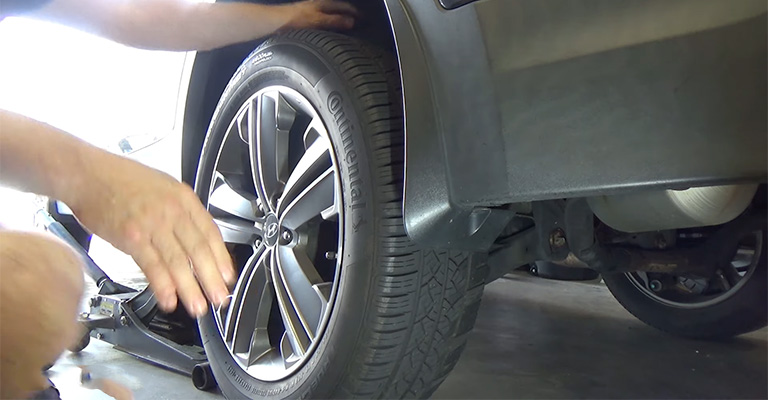
What Are Unbalanced Tires?
All tires have a blocky pattern that goes around their surface. These are called tread patterns, which help the tires to grip onto the road to increase friction. As a result, this prevents the car from sliding or skidding off the road when you abruptly step on the brakes.
When either of the tires has little to no tread left, they are called unbalanced tires. As the tread on a tire wears out, its weight also decreases, which eventually causes an unbalanced weight distribution around the wheel.
Due to this, you may experience the tires bouncing even when you’re driving on a smooth-surfaced road.
Tires can also become unbalanced due to weather conditions. For instance, a cold environment with cool air will cause steady tire deflation as the air particles inside the tires contract.
Although it’s rare, another reason for unbalanced tires could simply be poor manufacturing. There are many reasons for tires going out of balance.
Why Do Tires Become Out of Balance?
There are numerous causes for unbalanced tires, and sometimes it’s hard to point out a specific reason. Here are some of the most common causes of tires going out of balance –
Prolonged Use
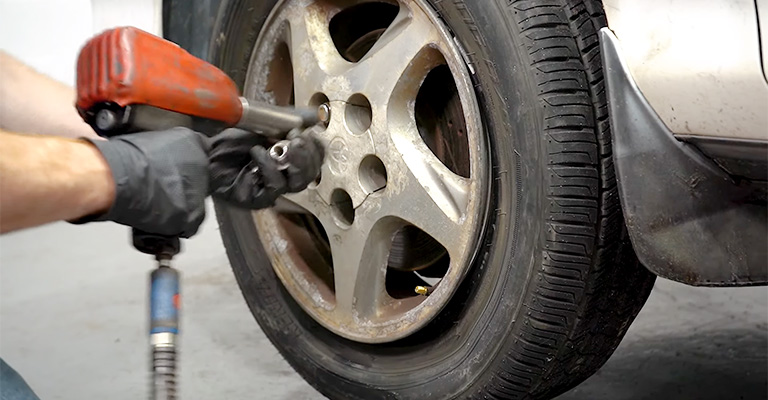
It is recommended by many manufacturers to switch out old tires for new ones every 5 or 6 years, regardless of the treadwear or tread design. This is because old tires, in general, are more susceptible to failures, such as punctures, deflation, and tearing.
When drivers pass this limit and continue to use their worn-out tires, they become light in weight. This loss of weight always occurs unevenly, which causes each of the tires to have different masses. Eventually, this sets the entire vehicle out of balance, as the uneven weight distribution affects the wheel.
Excessive Hard-Braking
When you hit the brakes on your car suddenly, it causes your tires to halt their rotation abruptly, causing them to rub against the road. It’s similar to the effect of cheese against a grater.
The heat generated by the friction, paired with the roughness of the road, causes intense damage to your tires, making them wear out very quickly. Plus, hard braking only causes damage to one side of each tire. So, its round shape is affected.
As a result, your tires lose their shape and eventually go out of balance due to further wear and tear.
Detached Balance Weights
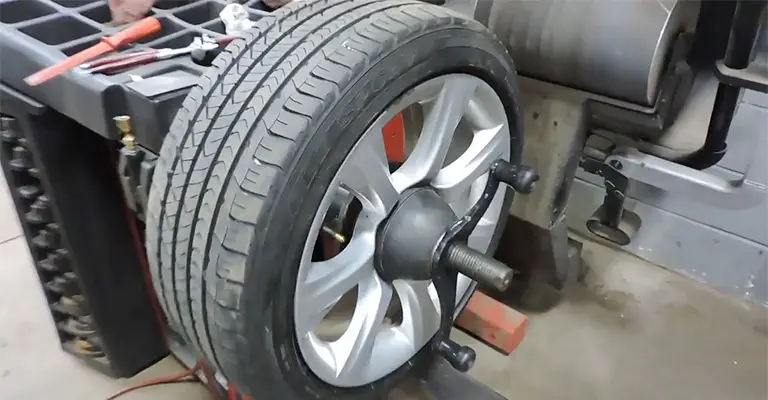
Balancing weights or wheel weights are used to keep the wheel-to-tire assembly in balance. These weights are specifically designed to aid in balancing rotating components, especially tires.
Sometimes, balancing weights can detach and disrupt the wheel-to-tire assembly, causing an internal imbalance of the tires. This leads to the more prominent effects of unbalanced tires, such as rapid treadwear.
Poor Fitting
If you’ve had a faulty tire replaced or repositioned and started experiencing the symptoms of unbalanced tires right after, the reason could most likely be poor fitting.
Changing a tire may seem easy, but even experienced mechanics struggle to do it. Even many manufacturers receive complaints for the poor positioning of their tires. So, this problem is not out of the ordinary. The best solution is to simply have the tires repositioned again.
As we’ve mentioned before, manufacturing can also play a part in this issue. However, it should also be noted that manufacturers won’t replace unbalanced tires if they have been used for a while. Most auto brands will only replace them after they’ve been mounted for the first time.
Economy Tires
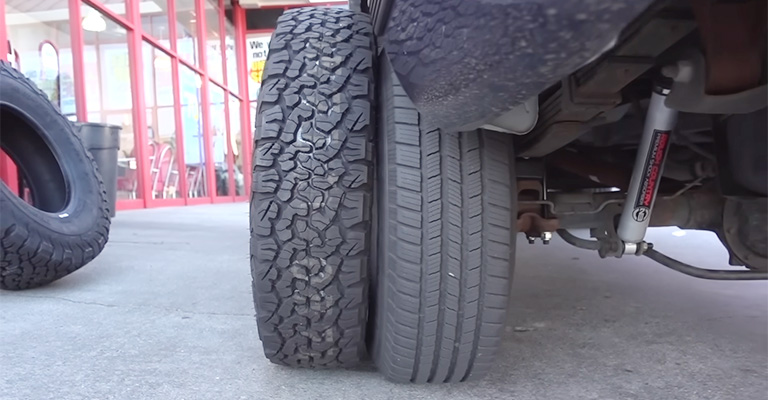
Tires that are manufactured using cheap material, machinery, and labor are often called “economy tires.” These tires are known for their low price and almost average quality. They usually do not last long.
Because of their poor durability, economy tires wear out not only very fast but also easily cause other issues such as deflation, punctures, etc. So, these tires are more likely to become unbalanced than regular tires of decent quality.
Cold Temperatures
In cold seasons or cooler climates, low temperatures can lead to unbalanced tires. This is because the cold wind causes the air particles inside of the tires to contract, eventually leading to the tires deflating.
The gradual deflation can be equal on all tires or uneven. Either way, it will result in an unequal weight distribution, causing unbalanced tires.
How Do You Know If Your Tires Are Unbalanced?
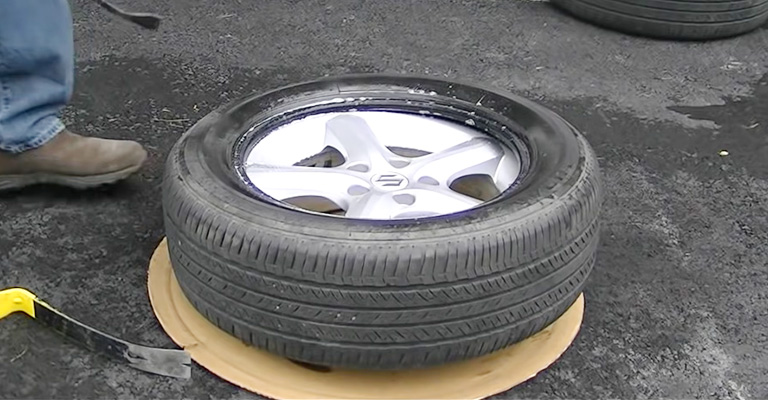
As with many car issues, it can be tricky to know for sure if you have unbalanced tires. This is due to the fact that a problem can be the cause of a variety of reasons, not only the ones we’ve listed above.
However, some dead giveaways of tires have gone out of balance. Here are some of the most common symptoms of unbalanced tires –
Repeated and Widespread Vibration
At certain speeds, you may feel vibrations throughout your vehicle. But you have to pay close attention, as these vibrations often go unnoticed at speeds below 50 mph.
When all of your tires are balanced, these vibrations do not happen. But when some of your tires are unbalanced, the uneven distribution of weight causes vibrations throughout your car.
If this occurrence is repetitive, then it may be due to unbalanced tires.
Uneven or Excess Treadwear
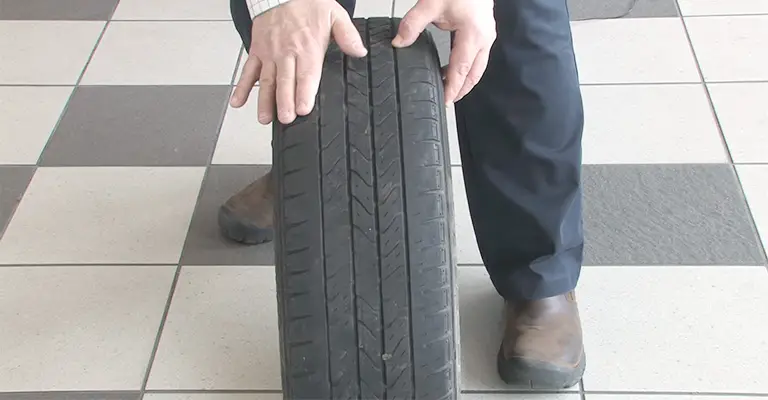
In balanced tires, the tread is even, which means that it wears down evenly over time. But with unbalanced tires, the lack of even weight distribution on all four wheels causes the tread on some tires to wear down more than the others.
Most of the time, you will notice cup-shaped or scalloping divots on tires that have gone out of balance.
Strange Noises
If you hear any buzzing, burring, humming, or whirring noises out of the blue, it may be a sign of unbalanced tires. These noises will most likely get louder as you drive faster.
Moreover, the noises can also be accompanied by vibrations.
Damaged Parts
Unbalanced tires can lead to a number of offshoot issues, one of them being damaged parts.
Due to the imbalance, there’s added stress on the inner workings of your vehicle, which can cause the parts to work harder to keep up with the uneven weight distribution.
Eventually, this causes the parts to wear out faster. This can cause multiple failures to take place inside your vehicle.
Increased Fuel Consumption
As the inner parts of your car work harder to keep up with your unbalanced tires, more fuel is needed to power this process. Also, your out-of-balance tires will have a greater effect on your driving performance as you drive faster, increasing fuel consumption even further.
Overall, this leads to not only a decreased fuel economy but high costs for refills.
How Do You Fix Unbalanced Tires?
The most effective fix for unbalanced tires is rebalancing. This process is done by professionals who put the wheel to tire assembly on a tire balancing machine.
This machine then assesses which are the faulty areas by taking close measurements and finding the exact weight differences.
First, each of the tires (mounted on a wheel) is placed onto the machine. To take the measurements, the wheel has to be spun around. This is done so that the differences in measurements are taken around the tire completely.
In case there is an imbalance, the workers take note of the differences in weight and adjust the tires by adding more weight to where it is needed. As a result, the original weight of the tire is restored, and the tires are rebalanced.
However, tire balancing is done in a number of ways.
Types of Tire Rebalancing
There are three commonly used ways of balancing tires: static, spin-balancing (dynamic), and road force. Here is how each is done –
Static Balancing
This type of balancing is done using weights, added one by one along a line of each tire (one plane). It is the easiest procedure as it has been done for years, mainly for slight imbalance issues.
In case the tires are out of balance, they are placed on a vertical supporter with either a bubble balancer or spindle tool. The heavier side of the tire will droop lower toward the ground, indicating where the mechanic needs to add the weight.
By the end of the process, the weights are only added to one side of the wheel. The only downside to this process is that it does not work for more complicated imbalance problems.
Spin-Balancing (Dynamic)
Dynamic balancing, or spin-balancing, is done by adding weights across the tire, including up and down and side-to-side.
With the help of spinning computer balancers, the mechanic places the wheel to tire assembly on a machine that spins at given speeds. While the assembly spins, the machine’s sensors detect and assess the uneven weight distributions.
The machine also locates the hardened spots of your tires and measures how much weight is needed to rebalance the wheels. Then, the mechanic puts weights on both sides of the wheels to bring about balance.
Road Force Balancing
A more modern method of rebalancing tires is the road force balancing process.
The balancing machine includes a large roller that presses the tire with a pressure that mimics the weight of the vehicle. Then, the tires are assessed to find whether the tires are unbalanced.
During this process, the machine’s sensors assess the pressure distribution around the tire’s circumference to find inconsistencies. If there are a number of irregularities, the mechanic is alerted to assess the wheel. Through this, the machine is able to determine whether the cause of the problem is the tire or wheel.
Road force balancing machines also have a variety of “tolerances” that are complementary to different vehicle types. It shows whether the tire and wheel are able to be re-matched to meet a certain tolerance. If they can, the machine then alerts the mechanic of the specific spots to work with.
This type of balancing takes a number of tries to get right, but it is definitely more accurate and precise than dynamic or static balancing.
What Is the Difference Between Balancing and Alignment?
Unbalanced tires can also be due to poor alignment of wheels. This is when the wheels of your vehicle are not at the exact same level as each other, with one or more being positioned higher/lower than the others.
In the alignment process, the wheels are straightened out so that all of the wheels are at level and spin in the same direction. But in the balancing method, the tires are balanced by the addition of weights so that there is equal distribution of mass.
It’s very common for drivers to confuse these two processes with each other as they are both done in order to fix unbalanced tires. They even have the same leading issue, which is uneven treadwear.
This is why when you go to a mechanic, the first thing they’ll do is run a checkup on the wheel alignment of your vehicle to make sure the wear is not due to misalignment. Then, they might proceed to rebalance if needed.
Conclusion
To summarize, unbalanced tires are not out of the ordinary and can happen to any driver. Although it is uncertain what this problem is directly caused by, you should always prioritize having your tires replaced, rebalanced, or aligned regularly to prevent this issue.
The main takeaway from our information should be that continuing to drive on unbalanced tires only leads to more problems. So, make sure not to put unnecessary stress on your tires and adopt safe driving habits.
Leave a Reply